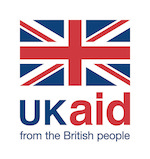Mobile networks and the connectivity they provide can be a lifeline for those affected by sudden-onset disasters and protracted humanitarian crises. Be it access to critical information, the ability to communicate with family and friends, or through the provision of humanitarian services, mobile technology can enable individuals to build their resilience and coping capacity to the adverse impacts of crises. Further, digital solutions are transforming the ways in which the humanitarian sector is able to monitor, prepare for, and respond to, such events.
Today marks the launch of the ‘Building resilience through mobile-enabled solutions: Lessons from the Mobile for Humanitarian Innovation Fund’ report.
The GSMA Mobile for Humanitarian Innovation (M4H) programme’s mission is to accelerate the delivery and impact of digital humanitarian assistance. The programme aims to catalyse partnerships that deliver innovative, mobile-enabled solutions to improve how those affected by disaster and crisis engage with those providing assistance, whether humanitarian agencies, NGOs, governments or private organisations. Launched in September 2017 with support from the UK Foreign, Commonwealth and Development Office (FCDO), the inaugural round of the Innovation Fund aimed to support projects which would help strengthen the resilience of communities experiencing or at risk of crisis. Five innovative projects were selected and provided with funding and support. These projects were led by Nokia Saving Lives, REFUNITE, Lumkani, Mercy Corps and Flowminder.
The value of mobile-enabled programming for building resilience
All five grantees provided critical evidence to demonstrate that mobile as a tool can be particularly valuable in building resilience, of communities and of the humanitarian sector.
- In Haiti, Mercy Corps’ Communities in Haiti Access New Technologies for Early Warning/Response (CHANTER) project demonstrated that mobile technology is a cost-effective way to inform communities, even in remote areas and regardless of gender, about extreme weather events, and to provide advice on what to do to prepare for and minimise impact.
- Likewise, Lumkani demonstrated that their mobile-enabled solution could not only reduce the spread of fires in informal settlements, saving lives and property, but also provide livelihood protection and greater financial resilience in the form of micro-insurance, possibly for the first time given the ability of the IoT device to geo-locate policyholders.
- In the Philippines, Nokia Saving Lives demonstrated in the roll out of their LTE connected drones, that an effective partnership between a mobile operator, a humanitarian actor and a technology vendor could produce an easily deployable yet highly sophisticated tool for disaster response and risk planning.
- REFUNITE provided a viable source of supplementary income to displaced populations in Uganda via their micro-tasking platform LevelApp, with wider benefits including social and entertainment benefits. If commercial clients can be successfully on-boarded, the model could continue to increase users’ financial resilience and copying capacity to shock events.
- Flowminder decreased the time required to produce usable mobility insights from the analysis of Call Detail Records (CDR) from 11 days to between three and four, a sizeable reduction in disasters contexts where every hour of a response counts.
Through a systematic review which synthesised over 100 pieces of evidence alongside in-depth interviews with grantees and GSMA staff, seven overarching lessons have been drawn from the collective lessons of these projects. Whilst many of these lessons will be recognisably important for any type of service design, they are particularly relevant in resilience building. We share the first three below.
Lessons for mobile-enabled resilience interventions
1. Innovators need to build trust with end users
Trust was key in Mercy Corps’ CHANTER project. Use of local partners, strong community engagement and relatable, context specific content resulted in 84 per cent of users taking action suggested to them through the mobile-enabled service in order to build their resilience to extreme weather events.
2. Innovators need to ensure they truly understand the local context, including prospective service users
Flowminder, which relies on the use of mobile network operator (MNO) CDR, implements their projects in line with national regulations, the EU’s GDPR regulations and the restrictions of each MNO user, thus ensuring full alignment. This has enabled Flowminder to build a system which can be used in multiple contexts, increasing opportunity for mobility data to positively inform disaster related planning and response decisions.
3. Equitable access is a key consideration in mobile-enabled innovations
Creating an intentional inclusion strategy can help inform technology design choices to reach more marginalised audiences, who are likely to be the most severely impacted by disasters and crises when they occur. Lumkani acted to ensure women were not excluded from their fire insurance service by placing a strong emphasis on hiring female agents, resulting in women accounting for 80 per cent of their agents and two-thirds of their customers.
To read all seven lessons in detail, check out the full report. We hope these will provide insights for other innovators seeking to leverage the power of mobile technology to strengthen the resilience of people and communities in crisis.
As the sector continues to focus on activities that build resilience, other innovators should consider how to position their mobile-enabled resilience programmes with key stakeholders. Demonstrating efficacy, equity and cost-effectiveness is likely to be a key selling point for potential humanitarian, MNO and government partners considering mobile-enabled interventions. Building trust, ensuring equitable access, and being contextually relevant will be critical to supporting individuals increase their resilience.
The five solutions profiled above and in the report were implemented throughout 2019 and 2020, generating lessons and impact that reached over 100,000 people in communities across five countries within the grant timelines. These solutions have continued to scale up, collectively reaching over 2.2 million people to date. For further information, see the Key Trends from the Inaugural Round report, and for an overview of all of the projects in the M4H Innovation Fund portfolio visit the Grantee map.



